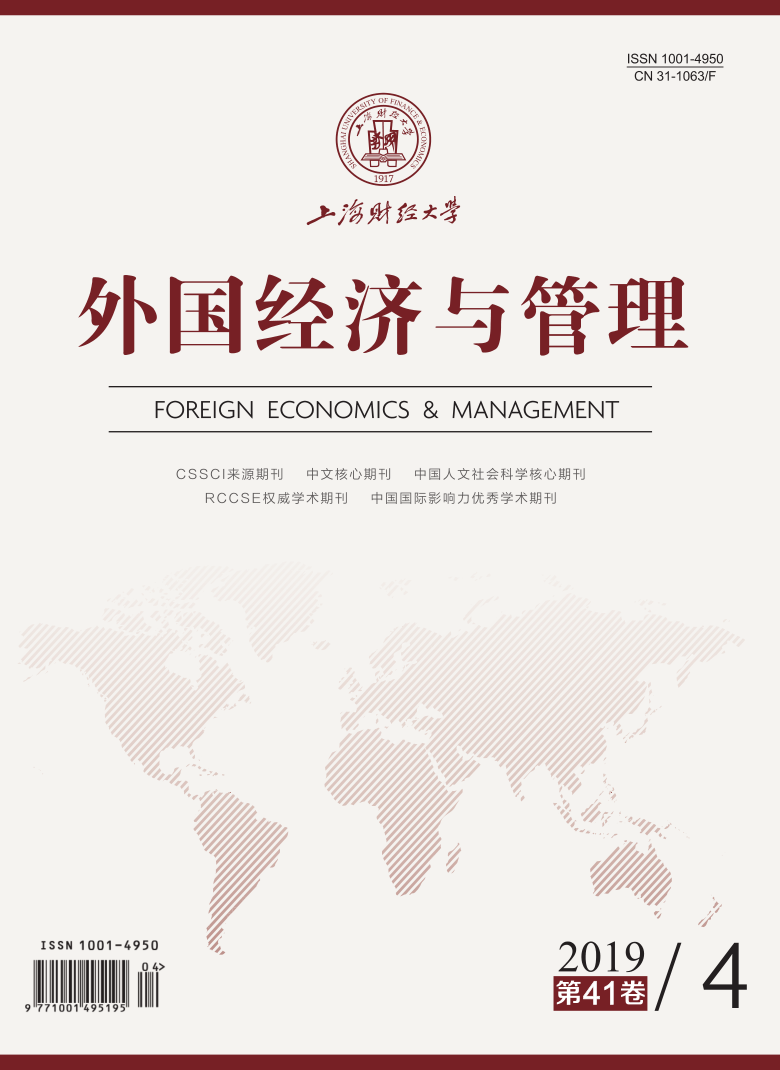董事会非正式层级是董事会中因成员能力和影响力不同而形成的非正式结构,对成员互动产生影响。该领域研究对于揭示董事会治理效应的中间路径具有重要意义。不过,现有研究对其内涵的界定并不清晰,对其作用机制的理解也存在差异。通过评述相关文献,本研究首先从形成因素、层级秩序、结构特点三方面界定董事会非正式层级内涵,对其产生过程加以梳理。随后将非正式层级的作用机制归纳为权力距离观和关系契约观,并且比较二者在个体层面的差异性和群体层面的一致性,总结非正式层级正反两方面作用效果并构建理论框架。在此基础上,根据情境因素的特点区分外源性、内源性两类因素,并针对现有研究的不足进行展望。通过剖析隐性秩序对决策互动过程的深刻影响,进一步拓展了董事会研究由静态结构向动态过程深入的相关理论。
隐性的秩序:董事会非正式层级研究述评及展望
摘要
参考文献
1 陈灿. 当前国外关系契约研究浅析[J]. 外国经济与管理,2004, (12): 10-14 DOI:10.3969/j.issn.1001-4950.2004.12.003
3 单红梅, 胡恩华, 鲍静静, 等. 非国有企业员工组织地位感知水平对离职倾向的影响研究[J]. 管理学报,2015, (8): 1144-1153 DOI:10.3969/j.issn.1672-884x.2015.08.006
11 武立东, 江津, 王凯. 董事会成员地位差异、环境不确定性与企业投资行为[J]. 管理科学,2016, (2): 52-65 DOI:10.3969/j.issn.1672-0334.2016.02.005
12 谢永珍, 张雅萌, 吴龙吟, 等. 董事地位差异、决策行为强度对民营上市公司财务绩效的影响研究[J]. 管理学报,2017, (12): 1767-1776 DOI:10.3969/j.issn.1672-884x.2017.12.004
14 杨玉龙, 潘飞, 张川. 差序格局视角下的中国企业业绩评价[J]. 会计研究,2014, (10): 66-73 DOI:10.3969/j.issn.1003-2886.2014.10.009
15 叶玲, 管亚梅. 董事会隐性层级、公司投资行为及效率——基于我国A股上市公司的实证检验[J]. 财经理论与实践,2016, (5): 43-49 DOI:10.3969/j.issn.1003-7217.2016.05.007
16 曾江洪, 何苹. 国有上市公司董事会非正式层级与财务绩效关系的研究[J]. 财务与金融,2014, (6): 78-82, 94 DOI:10.3969/j.issn.1674-3059.2014.06.014
17 曾江洪, 肖涛. 董事会非正式层级、技术董事与技术创新绩效[J]. 科技与经济,2015, (3): 1-5, 19 DOI:10.3969/j.issn.1008-5696.2015.03.001
20 张耀伟, 陈世山, 李维安. 董事会非正式层级的绩效效应及其影响机制研究[J]. 管理科学,2015, (1): 1-17 DOI:10.3969/j.issn.1672-0334.2015.01.001
22 周建涛, 廖建桥. 权力距离导向与员工建言: 组织地位感知的影响[J]. 管理科学,2012, (1): 35-44 DOI:10.3969/j.issn.1672-0334.2012.01.004
23 Agarwal S, Qian W L, Reeb D M, et al. Playing the boys game: Golf buddies and board diversity[J]. American Economic Review,2016, 106(5): 272-276 DOI:10.1257/aer.p20161033
24 Anderson C, Brown C E. The functions and dysfunctions of hierarchy[J]. Research in Organizational Behavior,2010, 30: 55-89 DOI:10.1016/j.riob.2010.08.002
25 Boivie S, Bednar M K, Aguilera R V, et al. Are boards designed to fail? The implausibility of effective board monitoring[J]. The Academy of Management Annals,2016, 10(1): 319-407 DOI:10.5465/19416520.2016.1120957
26 Bunderson J S. Recognizing and utilizing expertise in work groups: A status characteristics perspective[J]. Administrative Science Quarterly,2003, 48(4): 557-591 DOI:10.2307/3556637
27 Bunderson J S, Van Der Vegt G S, Cantimur Y, et al. Different views of hierarchy and why they matter: Hierarchy as inequality or as cascading influence[J]. The Academy of Management Journal,2016, 59(4): 1265-1289 DOI:10.5465/amj.2014.0601
28 Dalton D R, Hitt M A, Certo S T, et al. The fundamental agency problem and its mitigation: Independence, equity, and the market for corporate control[J]. The Academy of Management Annals,2007, 1(1): 1-64 DOI:10.5465/078559806
29 Diefenbach T, Sillince J A A. Formal and informal hierarchy in different types of organization[J]. Organization Studies,2011, 32(11): 1515-1537 DOI:10.1177/0170840611421254
30 Etzioni A. Authority structure and organizational effectiveness[J]. Administrative Science Quarterly,1959, 4(1): 43-67 DOI:10.2307/2390648
31 Fich E M, Shivdasani A. Are busy boards effective monitors?[J]. The Journal of Finance,2006, 61(2): 689-724 DOI:10.1111/j.1540-6261.2006.00852.x
32 Forbes D P, Milliken F J. Cognition and corporate governance: Understanding boards of directors as strategic decision-making groups[J]. Academy of Management Review,1999, 24(3): 489-505 DOI:10.5465/amr.1999.2202133
34 Garg S, Li Q, Shaw J D. Undervaluation of directors in the board hierarchy: Impact on turnover of directors (and CEOs) in newly public firms[J]. Strategic Management Journal,2018, 39(2): 429-457 DOI:10.1002/smj.2018.39.issue-2
35 Gleibs I H, Haslam S A. Do we want a fighter? The influence of group status and the stability of intergroup relations on leader prototypicality and endorsement[J]. The Leadership Quarterly,2016, 27(4): 557-573 DOI:10.1016/j.leaqua.2015.12.001
36 Gore A K, Matsunaga S, Yeung P E. The role of technical expertise in firm governance structure: Evidence from chief financial officer contractual incentives[J]. Strategic Management Journal,2011, 32(7): 771-786 DOI:10.1002/smj.v32.7
37 Groysberg B, Polzer J T, Elfenbein H A. Too many cooks spoil the broth: How high-status individuals decrease group effectiveness[J]. Organization Science,2011, 22(3): 722-737 DOI:10.1287/orsc.1100.0547
38 Hauser R. Busy directors and firm performance: Evidence from mergers[J]. Journal of Financial Economics,2018, 128(1): 16-37 DOI:10.1016/j.jfineco.2018.01.009
39 He J Y, Huang Z. Board informal hierarchy and firm financial performance: Exploring a tacit structure guiding boardroom interactions[J]. The Academy of Management Journal,2011, 54(6): 1119-1139 DOI:10.5465/amj.2009.0824
40 Hogg M A. A social identity theory of leadership[J]. Personality and Social Psychology Review,2001, 5(3): 184-200 DOI:10.1207/S15327957PSPR0503_1
41 Khanna P, Jones C D, Boivie S. Director human capital, information processing demands, and board effectiveness[J]. Journal of Management,2014, 40(2): 557-585 DOI:10.1177/0149206313515523
42 Kilduff G J, Willer R, Anderson C. Hierarchy and its discontents: Status disagreement leads to withdrawal of contribution and lower group performance[J]. Organization Science,2016, 27(2): 373-390 DOI:10.1287/orsc.2016.1058
43 Krause R, Semadeni M, Withers M C. That special someone: When the board views its chair as a resource[J]. Strategic Management Journal,2016, 37(9): 1990-2002 DOI:10.1002/smj.2444
44 Lara P J. Status in management and organizations[J]. Management Decision,2011, 49(6): 1024-1028 DOI:10.1108/00251741111143667
45 Levy O, Reiche B S. The politics of cultural capital: Social hierarchy and organizational architecture in the multinational corporation[J]. Human Relations,2017, 71(6): 867-894
46 Magee J C, Galinsky A D. Social hierarchy: The self‐reinforcing nature of power and status[J]. The Academy of Management Annals,2008, 2(1): 351-398 DOI:10.5465/19416520802211628
48 Phillips D J, Zuckerman E W. Middle-status conformity: Theoretical restatement and empirical demonstration in two markets[J]. American Journal of Sociology,2001, 107(2): 379-429 DOI:10.1086/324072
49 Ravlin E C, Thomas D C. Status and stratification processes in organizational life[J]. Journal of Management,2005, 31(6): 966-987 DOI:10.1177/0149206305279898
50 Ridgeway C, Johnson C. What is the relationship between socioemotional behavior and status in task groups?[J]. American Journal of Sociology,1990, 95(5): 1189-1212 DOI:10.1086/229426
51 Sauerwald S, Lin Z A, Peng M W. Board social capital and excess CEO returns[J]. Strategic Management Journal,2016, 37(3): 498-520 DOI:10.1002/smj.2016.37.issue-3
53 Simpson B, Willer R, Ridgeway C L. Status hierarchies and the organization of collective action[J]. Sociological Theory,2012, 30(3): 149-166 DOI:10.1177/0735275112457912
54 Strang D, Baron J N. Categorical imperatives: The structure of job titles in California state agencies[J]. American Sociological Review,1990, 55(4): 479-495 DOI:10.2307/2095802
55 Veltrop D B, Molleman E, Hooghiemstra R B H, et al. Who’s the boss at the top? A micro-level analysis of director expertise, status and conformity within boards[J]. Journal of Management Studies,2017, 54(7): 1079-1110 DOI:10.1111/joms.2017.54.issue-7
56 Washington M, Zajac E J. Status evolution and competition: Theory and evidence[J]. The Academy of Management Journal,2005, 48(2): 282-296 DOI:10.5465/amj.2005.16928408
57 Westphal J D, Shani G. Psyched-up to suck-up: Self-regulated cognition, interpersonal influence, and recommendations for board appointments in the corporate elite[J]. The Academy of Management Journal,2016, 59(2): 479-509 DOI:10.5465/amj.2014.0010
58 Zahra S A, Pearce Ⅱ J A. Boards of directors and corporate financial performance: A review and integrative model[J]. Journal of Management,1989, 15(2): 291-334 DOI:10.1177/014920638901500208
59 Zhu D H, Shen W. Why do some outside successions fare better than others? The role of outside CEOs’ prior experience with board diversity[J]. Strategic Management Journal,2016, 37(13): 2695-2708 DOI:10.1002/smj.2471
60 Zhu J G, Ye K T, Tucker J W, et al. Board hierarchy, independent directors, and firm value: Evidence from China[J]. Journal of Corporate Finance,2016, 41: 262-279 DOI:10.1016/j.jcorpfin.2016.09.009
引用本文
马连福, 高塬, 杜博. 隐性的秩序:董事会非正式层级研究述评及展望[J]. 外国经济与管理, 2019, 41(4): 111-125.
导出参考文献,格式为:





 , 1, 2
, 1, 2 11939
11939  11555
11555

